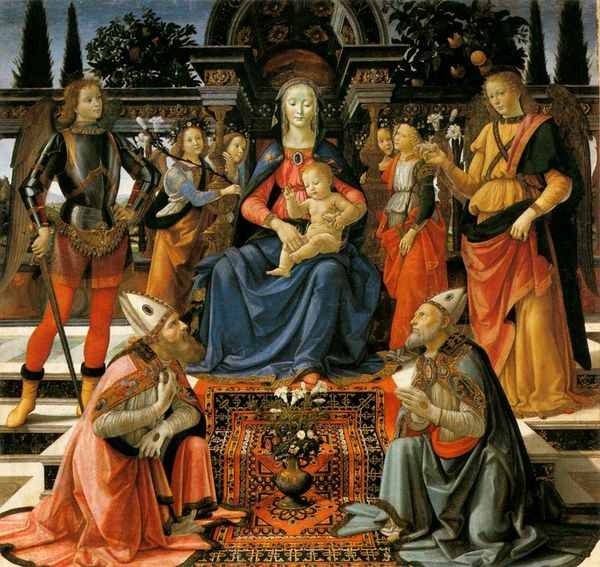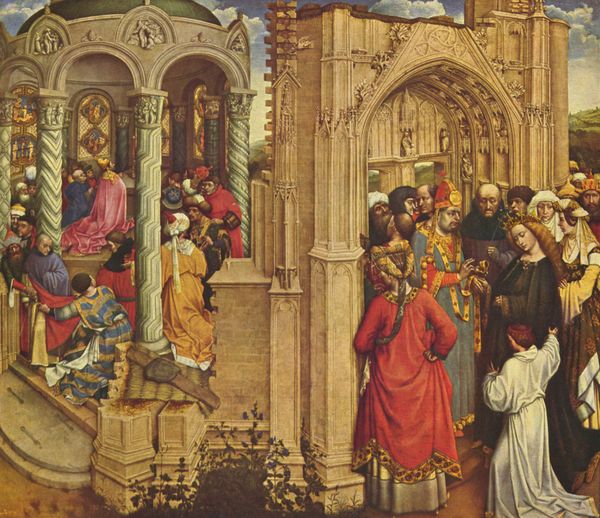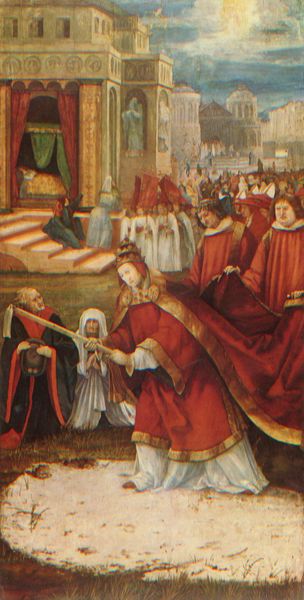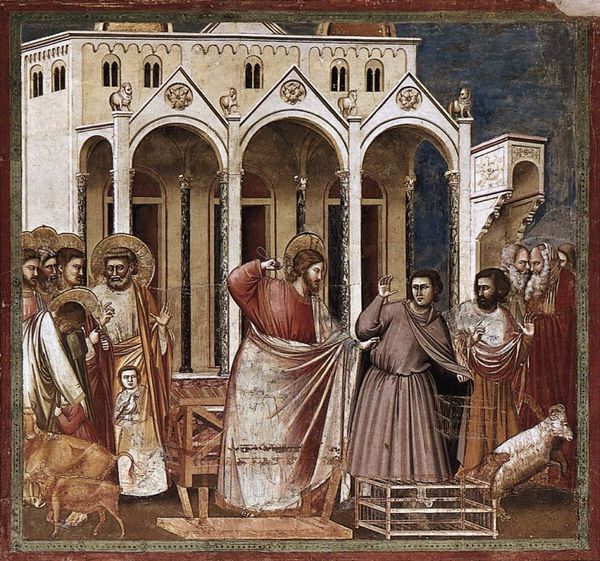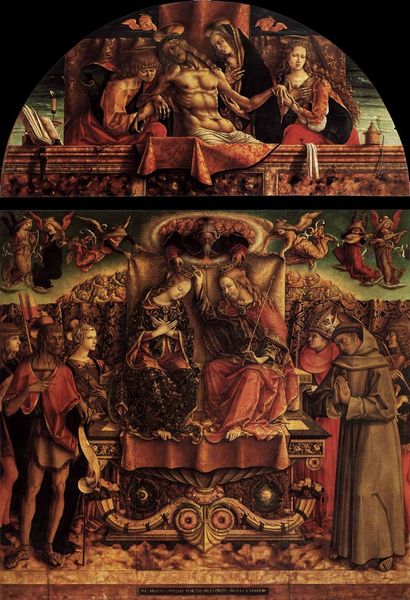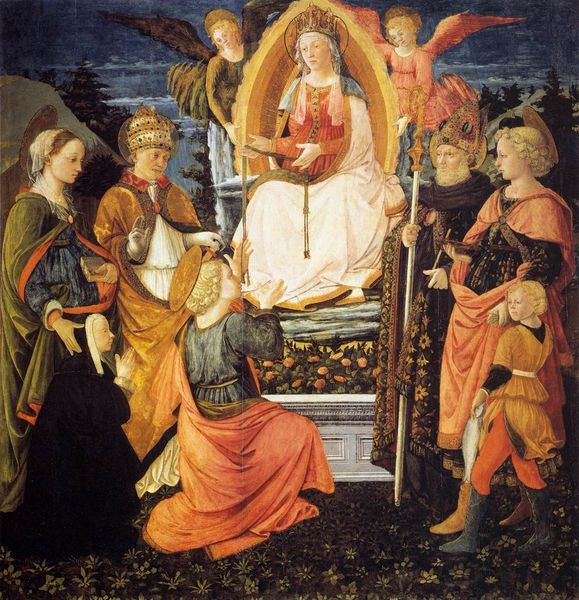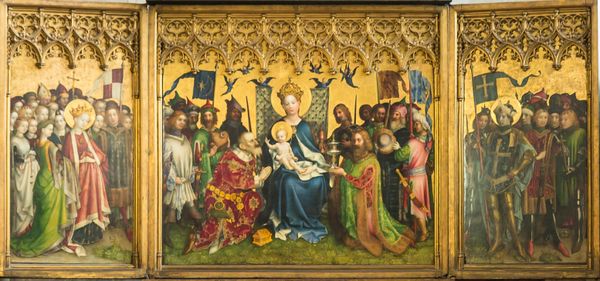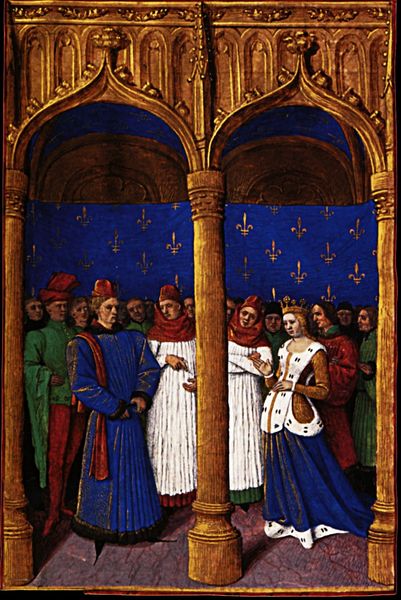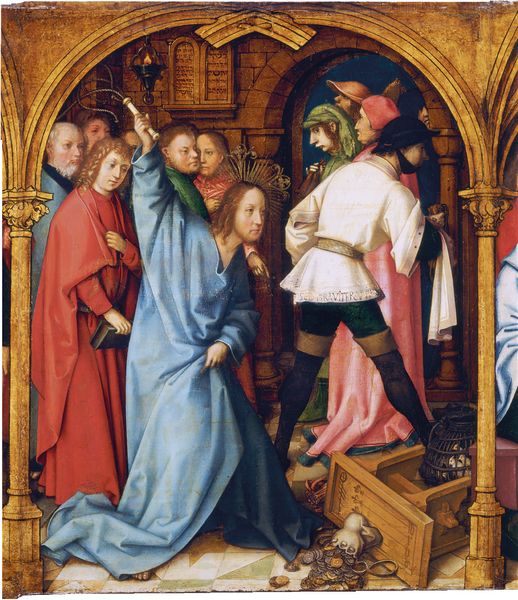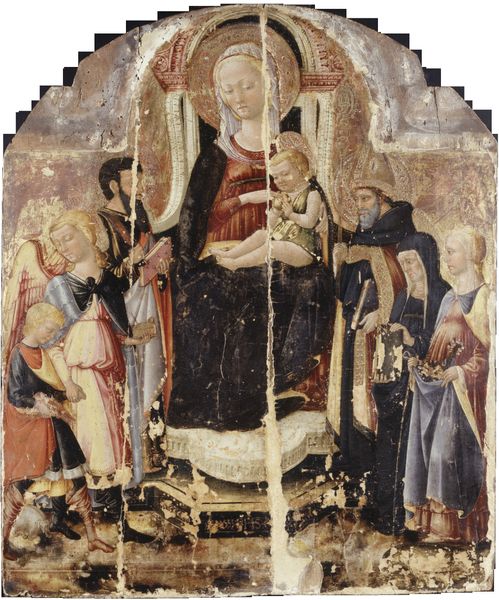
tempera, painting
#
portrait
#
tempera
#
painting
#
sculpture
#
child
#
group-portraits
#
christianity
#
history-painting
#
italian-renaissance
#
christ
Copyright: Public domain
Editor: This is Carlo Crivelli's "Virgin and Child Enthroned with Saints," created in 1488 using tempera. It's a really striking piece – the figures feel so rigidly posed, almost sculptural. What compositional elements stand out to you the most? Curator: The pronounced linear perspective immediately seizes attention. Crivelli masterfully constructs a deep architectural space, yet simultaneously flattens the figures, creating a compelling tension. Note, too, how each figure is delineated with precise contours and meticulous detail, characteristic of Crivelli's style. Consider how the fruit garland suspended above serves not only as ornamentation but also as a device reinforcing this interplay between depth and surface. What is your impression of its purpose within the picture plane? Editor: I see what you mean, that garland does flatten the space, pinning it down. All those meticulously rendered details, especially in the clothing and ornamentation... they do flatten the forms as well as give a feeling of richness and density to the composition. Do you think the material aspects of this work relate to its meaning? Curator: Certainly. The meticulous detail and luminous color, achieved through tempera, draw the eye and elevate the subject. Furthermore, the repetition of geometric forms and patterns – within the architectural framework, the clothing, even the halos – contributes to the painting's overall formal unity and reinforces its sacred nature. Observe how the precise rendering of textures – the brocade, the jewels, the fruit – invites tactile engagement, yet simultaneously maintains a sense of idealization and otherworldliness. What inferences can you draw from this juxtaposition? Editor: So, the real looking textures, in conflict with the formal artificiality? I guess it creates a sense of divine opulence, an enticing visual surface, to engage the viewer with its religious content. Curator: Precisely. The formal qualities elevate the scene beyond the earthly, inviting contemplation of the divine. It’s fascinating how Crivelli uses these formal devices to communicate spiritual concepts. Editor: I never thought about it that way before. Thanks for pointing out those nuances, especially that push and pull of depth versus flatness. Curator: My pleasure. Analyzing the form allows us to understand the artist's intent more clearly.
Comments
No comments
Be the first to comment and join the conversation on the ultimate creative platform.

